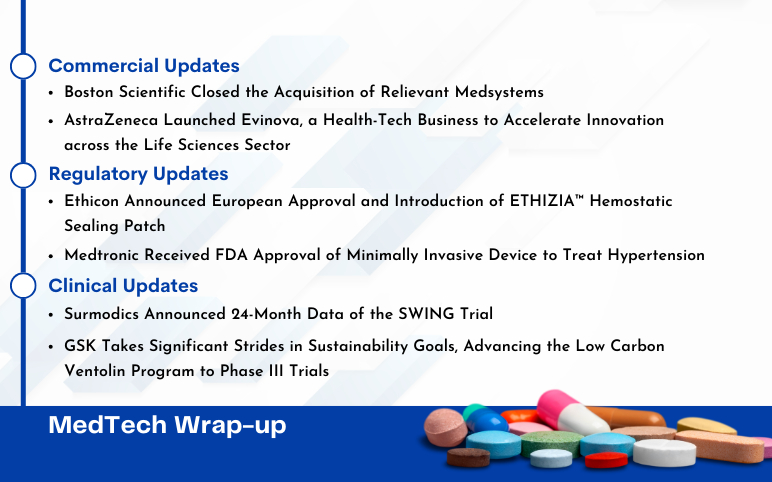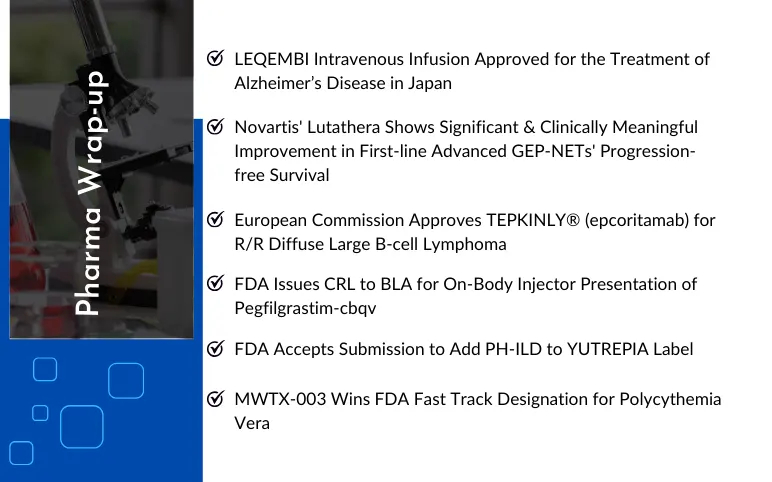Table of Contents
Pulmonary arterial hypertension is a progressive disease of the lung vascular system, primarily affecting the small pulmonary arterioles. Pulmonary arterial hypertension is defined as mean pulmonary artery pressure greater than 25 mm Hg measured during right heart catheterization. The term Pulmonary arterial hypertension describes a subset of patients who also have the presence of pre-capillary hypertension, including an end-expiratory pulmonary artery wedge pressure (less than 15 mm Hg) and a pulmonary vascular resistance greater than 3 Woods units. At present, there is no permanent cure for Pulmonary arterial hypertension. But several new potential developments in the Pulmonary arterial hypertension treatment landscape can reduce the symptoms and also aid in the management of the condition. When Pulmonary arterial hypertension cause is identified and treated early, it may be still possible to prevent permanent damage to the pulmonary arteries which are blood vessels responsible for the supply to the lungs.
Cardinal pulmonary arterial hypertension symptoms include progressive exercise dyspnea, often accompanied by fatigue and exhaustion. Because of the fact, that Pulmonary arterial hypertension signs and symptoms are unspecific, there is often a delay of many months or even years between the onset of symptoms and diagnosis. With pulmonary arterial hypertension progression, it is observed that the symptoms become worse and new symptoms occur, e.g., dyspnea on bending down (bendopnea) and syncope, the latter particularly during or immediately after physical exertion. Precise pulmonary arterial hypertension classification and detection are considered to be the essential goals of diagnosis. With physical examination, the basic Pulmonary arterial hypertension diagnosis in every case of uncertain or progressive exercise dyspnea should include ECG tests and tests involving the determination of brain natriuretic peptide (BNP) or the N-terminal fragment of its precursor (NT-proBNP).
Pulmonary arterial hypertension has been divided into three subgroups – idiopathic pulmonary arterial hypertension, heritable pulmonary arterial hypertension, and arterial pulmonary hypertension related to risk factors or associated conditions. Most commonly found among these is idiopathic pulmonary arterial hypertension and is characterized by increased vascular resistance and blood vessel narrowing within the pulmonary vasculature. Restricted flow through pulmonary arteries, as found in PAH, is thought to have molecular and genetic causes which lead to hypertrophy of smooth muscle, endothelial cells, and adventitia.
Pulmonary arterial hypertension treatment has progressed significantly over the past few decades in both its complexity and efficacy. The therapy aims to achieve a low-risk status (maintaining WHO-FC II if possible) to preserve patient function, and quality of life and minimize pulmonary arterial hypertension mortality rate. Pulmonary arterial hypertension management involves a stepwise pragmatic approach from general supportive treatment up to targeted pharmacological interventions.
Pulmonary Arterial Hypertension Epidemiological Facts and Figures
Pulmonary arterial hypertension is a rare and progressive disorder as it gets worse with time. Usually pulmonary arterial hypertension cause is unknown, but some of the underlying suspected causes include high blood pressure, connective tissue disease, coronary artery disease, high blood pressure, and liver disease (cirrhosis). The chronic and incurable disease doesn’t occur much frequently but is most common in women between the ages of 30-60. According to DelveInsight’s analysis, in the year 2021, the total prevalence of pulmonary arterial hypertension was 69,605 cases in the 7MM which will increase by 2032. The prevalence of pulmonary arterial hypertension varies widely in different geographical locations, depending upon the influence of cultures on dietary habits.
Also, as per DelveInsight’s analysis, the total prevalence of pulmonary arterial hypertension in the US was calculated to be 53,951 cases in the year 2021. Among the EU5 countries, France has the highest prevalence of pulmonary arterial hypertension cases which was 3,396 cases in 2021. Whereas, on the other hand, Spain has the lowest prevalence of pulmonary arterial hypertension among the 7MM, with 1,503 cases in 2021. In addition, Japan had a total of 1,947 pulmonary arterial hypertension prevalent cases. Pulmonary arterial hypertension epidemiological segmentation can be done on the basis of total prevalent cases of pulmonary arterial hypertension, diagnosed cases of pulmonary arterial hypertension, gender-specific cases of pulmonary arterial hypertension, and subtype-specific cases of pulmonary arterial hypertension.
Pulmonary Arterial Hypertension Market Insight
The overall dynamics of the Pulmonary arterial hypertension market is anticipated to change in the coming years owing to the expected launch of potential novel and emerging therapies backed by payer willingness to reimburse, providing affordable coverage to a large addressable population. In addition to that, the increasing incident cases, rising research on pulmonary arterial hypertension treatment, and increasing expenditure regarding the disease are factors responsible for the growth of the Pulmonary Arterial Hypertension market size.
As per DelveInsight's estimates, the Pulmonary arterial hypertension market size was found to be USD 4,777 million in the 7MM in the year 2020. Additionally, it is anticipated that it will accumulate almost USD 4,901 million in the year 2022 in the seven major markets. Following a similar trend, the Pulmonary Arterial Hypertension market size is anticipated to increase at a substantial growth rate in the coming years.
Many key pharmaceuticals that are proactively involved in producing pulmonary arterial hypertension medications in the coming years include names such as Pfizer, Eli Lilly and Company, United Therapeutics Corporation, Gilead Sciences, GlaxoSmithKline, ICOS Corporation, Actelion Pharmaceuticals, Nippon Shinyaku, United Therapeutics Corporation, Bayer Group, Co Therix, PhaseBio Pharmaceuticals, Liquida Technologies, Inc., Altavant Sciences, Aerovate Therapeutics, Respira Therapeutics, Gossamer Bio Inc., Merck Sharp & Dohme Corp, Insmed Incorporated, Pharmaosa Biopharma Inc. whose key Pulmonary arterial hypertension treatment therapies are expected to be launched in the coming years and can also serve as a major booster for pulmonary arterial hypertension treatment market.

Pulmonary Arterial Hypertension Treatment Scenario
The diversity in the approaches regarding pulmonary arterial hypertension treatment is due to the multiple etiologies including idiopathic pulmonary hypertension, drug-induced pulmonary arterial hypertension treatment, connective tissue disorder, and congenital heart disease. The current pulmonary arterial hypertension treatment landscape ranges from the use of vasodilators to endothelial receptor antagonists. General measures, supportive therapy, pharmacological treatment, and surgical treatment are also used for pulmonary arterial hypertension treatment.
Revatio is a phosphodiesterase-5 (PDE-5) inhibitor indicated for pulmonary arterial hypertension treatment in adults to improve exercise ability and delay clinical worsening. Revatio is available as tablets and oral suspension for oral use and injection for intravenous use. Selexipag (Uptravi) is an orally active, first-in-class, selective prostacyclin IP receptor agonist. Selexipag was FDA approved for the long-term pulmonary arterial hypertension treatment in adult patients. Iloprost (Ventavis) is a second-generation structural analog of prostacyclin PGI2 that dilates systemic and pulmonary arterial vascular beds and aids in pulmonary arterial hypertension treatment. Ambrisentan (Letairis) is an orally active selective type A endothelin receptor antagonist indicated for treating pulmonary arterial hypertension.
The therapeutic intervention is classified into Calcium Channel Blockers (CCBs), Endothelin Receptor Antagonists (ERAs), and Phosphodiesterase-5 (PDE-5) inhibitors are used as the pharmacological Pulmonary arterial hypertension treatment.
Read More About - Pulmonary Arterial Hypertension Market Outlook
Novel Potential Drugs in Pulmonary Arterial Hypertension Pipeline
Pulmonary arterial hypertension treatment is a rapidly changing landscape, with arguably, the most significant advancement in recent years. The market is anticipated to evolve in the coming years owing to the expected launch of emerging Pulmonary arterial hypertension therapies such as Sotatercept (Acceleron Pharma Inc.), Ralinepag (United Therapeutics), Rodatristat ethyl (Altavant Sciences), RT234 (Respira Therapeutics) and many more by key players in the pulmonary arterial hypertension treatment regime.
Also, the launch of various multiple-stage pulmonary arterial hypertension pipeline products will significantly revolutionize the Pulmonary Arterial Hypertension market dynamics shortly. Some of the pulmonary arterial hypertension pipeline drugs under different phases of development in several clinical trials include -
Sotatercept is an investigational agent being designed by Acceleron Pharma Inc. to be a selective ligand trap for members of the TGF-beta superfamily to rebalance BMPR-II signaling, which is a key molecular driver of Pulmonary arterial hypertension. Recent topline analysis of the PULSAR Phase II trial of sotatercept in patients with pulmonary arterial hypertension revealed the trial met the primary as well as key and other secondary endpoints, with adverse events consistent with previously published data on sotatercept in other diseases. Sotatercept received Orphan Drug designation from the US Food and Drug Administration (FDA) for Pulmonary arterial hypertension treatment in the year 2019.
Ralinepag is currently under investigation by United Therapeutics. It is a next-generation, orally available, non-prostanoid, selective, and potent IP agonist which has been studied in human pulmonary tissues for the treatment of pulmonary arterial hypertension. In vitro studies indicate that Ralinepag has high binding affinity and selectivity at the human IP receptor.
Rodatristat Ethyl is Altavant’s lead candidate, is a prodrug of a tryptophan hydroxylase (TPH) inhibitor designed to block peripheral serotonin production. Rodatristat, delivered as a prodrug (rodatristat ethyl), is an orally bioavailable direct and reversible TPH inhibitor for pulmonary arterial hypertension treatment.
AV-101 is under examination by Aerovate Therapeutics. It is a novel dry powder formulation of the FDA-approved therapy Imatinib. Dosed specifically for pulmonary arterial hypertension treatment, designed specifically for delivery by a dry powder inhaler, directly into the lungs to halt the proliferation of cells, improving heart function and everyday health.
RT234 is Respira’s lead drug-device product candidate for pulmonary arterial hypertension treatment. It is a first-in-class inhaled therapy intended for as-needed (PRN) use to improve exercise tolerance and provide acute relief from breathlessness and fatigue, the most commonly reported symptoms in pulmonary arterial hypertension patients.
Zamicastat is a dopamine β-hydroxylase (DBH) inhibitor under investigation by Bial and can cross the blood-brain barrier (BBB) to cause central as well as peripheral effects. Dopamine β hydroxylase (DBH) – a key player in the catecholamine biosynthetic pathway – may provide a therapeutic opportunity for pulmonary arterial hypertension treatment.
Road Ahead in Pulmonary Arterial Hypertension Treatment Domain
Recent developments in the pharmacotherapy for pulmonary arterial hypertension treatment has led to novel FDA approvals of agents such as ERAs, nitric oxide modulators, and prostacyclin therapies that target the underlying pulmonary arterial hypertension pathophysiology, these therapeutic options have increased drastically over the last decades. The rise of pharmacological interventions targeting the prostacyclin, endothelin, and NO pathways has significantly improved the results.
Even after much research and clinical development, pulmonary arterial hypertension remains a life-limiting illness with no prospect of cure. Despite success in preclinical models. by utilizing a number of potential novel approaches targeting cellular GPCRs, metabolism, growth factor receptors, ion channels, transcription factors, and inflammation, fruitful transfer to human disease with constructive results in the clinical trials were observed to be limited.

FAQs
Pulmonary Arterial Hypertension diagnosis includes several blood tests, chest X-ray, electrocardiogram, echocardiogram, right heart catheterization, and several other tests.
Pulmonary hypertension is considered a life-threatening condition that can worsen over time, but proper detection and treatments can help in symptomatic relief, to live better with the disease.
No, Pulmonary Arterial Hypertension can not be completely cured. But treatment can help in the reduction of symptoms.
Pulmonary arterial hypertension causes include high blood pressure, connective tissue disease, coronary artery disease, high blood pressure, and liver disease (cirrhosis).
Key pharmaceuticals involved in producing pulmonary arterial hypertension medications in the coming years include names such as Pfizer, Eli Lilly and Company, United Therapeutics Corporation, Gilead Sciences, GlaxoSmithKline, ICOS Corporation, Actelion Pharmaceuticals, Nippon Shinyaku, United Therapeutics Corporation, Bayer Group, Co Therix, PhaseBio Pharmaceuticals, Liquida Technologies, Inc., Altavant Sciences, Aerovate Therapeutics, Respira Therapeutics, Gossamer Bio Inc., Merck Sharp & Dohme Corp, Insmed Incorporated, Pharmaosa Biopharma Inc. whose key Pulmonary arterial hypertension treatment therapies are expected to be launched in the coming years.










-Agonist.png)


